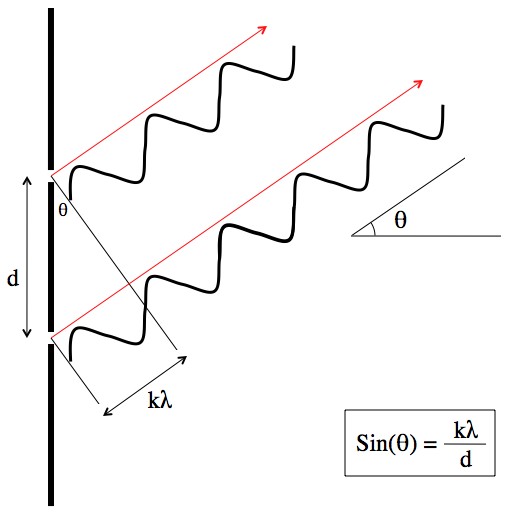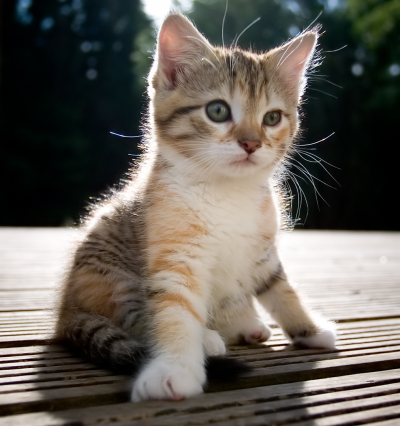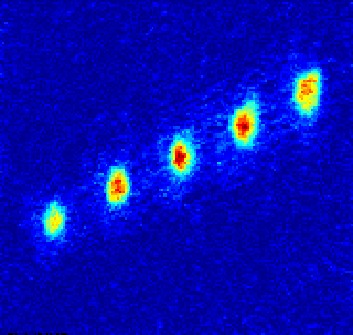Physicist: It helps to first get an idea of how the double slit experiment is done. The double slit experiment works for any particle, but in what follows I’ll use light to avoid confusion.
Shine light on two slits separated by some distance d. The light that emerges on the other side is free to scatter in any direction, but it doesn’t. Instead we find that it prefers a particular set of angles, and that these angles depend on d and the wavelength of the light, .
In the picture below the upward angle means that the light from the bottom slit has to take a slightly longer path. If the path difference is equal to a multiple of the wavelength, then the light from the two slits will be “in phase”, and will experience constructive interference.

Changing the angle changes the difference in path length from the two slits. When the difference is a multiple of the wavelength you get constructive interference.
It’s subtle, but already two assumptions have been made. 1) the screen that the light is being projected onto is very far away, so the light from the two slits, that gets to a particular point, follow roughly parallel paths. This is a reasonable assumption, and doesn’t cause any problems. 2) the light that comes out of the two slits is already in phase, and has the same wavelength. Luckily, there’s more than one way to skin a cat; either you use coherent (laser) light, or you make all the light come from a very small source (like another slit).
As a quick historical aside: When Thomas Young originally did this experiment he was looking at the interference pattern produced by allowing sunlight to pass through a colored filter (to get one ), then a single slit (to get the light “coherent”), then the double slits, then projected onto a wall. It was very dark, and (one can only assume) Young was very squinty. Tom was about the smartest person ever to live. He let the cat out of the bag for shearing forces, the Rosetta stone, and the transverse-wave nature of light, to name a very few. He was the polymath cat that ate the canary of science.
Back in the day (1924) fat cat Louis de Broglie, the 7th duke of Broglie, proposed the idea (later proven experimentally) that not only is light a wave; everything is. Kittens (the cute ones) have a mass of about 0.3kg, and old timey cannons have a muzzle velocity as high as the speed of sound (340 m/s). This translates to a de Broglie wavelength of .
Since kittens are about 0.1m long, the slits should each be about that size, and, say, 2m apart (larger slits need to be farther apart, to keep the interference fringes from overlapping). So d = 2m. Finally, you’d like the interference fringes on the screen to be several times farther apart than the kittens are large, otherwise you won’t be able to tell which kitten impact corresponds to which fringe. Say 1m apart, give or take.

The smaller the wavelength, the closer the fringes are together, and the harder it is to tell that there are fringes at all.
The separation between fringes is approximately , where L is the distance to the projection screen, and
is the angle between two adjacent fringes. For small angles you can use the aptly named “small angle approximation” for sine:
, and you’ll find that
. Since I’d like the fringes to be at least 1m apart,
and so
.
So, after passing through (both) of the double slits the cats will have to fly through about 330 quadrillion light years of purfectly empty space, before impacting the projection screen (on their feet, naturally). Unfortunately, the visible universe is just a hell of a lot smaller than that. Even so, this cat-astrophe is not the biggest problem with the cat-based double slit device.
Not to con-cat-enate the difficulties, but the biggest problems stem from the supreme challenge of generating a “coherent cat beam” (a “cat-hode ray”, as it were). Also, in order to get reasonable results from the experiment, it should be repeated at least 1036 times (about one hundred identical-to-the-last-atom-cats per fringe). As a quick aside; that’s too many cats.
In order to do the double slit experiment, especially when tiny wavelengths are involved, it’s very important that all of the particles involved are exactly identical and in phase. The best way to do this with light is to build a laser (which is an acronym for “Light Amplification by Stimulated Emission of Radiation”). Light (being made of bosons) obeys Bose-Einstein statistics, and as such the presence of a bunch of identical photons increases the likelihood of new identical photons being generated (that’s not obvious, so take it as read). Laser generation is an example of large scale entanglement, but unfortunately extending the technology to large scale cat entanglement would require all the yarn.
Coherent matter waves do exist, but so far they’ve all been made up of atoms in a Bose-Einstein condensate. It’s true what they say; curiosity and picokelvin temperatures killed the cat.
So to create a “caseo” (Cat Amplification by Stimulated Emission of Other cats), would require gathering so many exactly identical bosonic cats (“bosonic” here means an even number of protons, neutrons, and electrons), that the probability of new identical cats spontaneously forming from some kind of proto-cat particle soup becomes fairly high. Getting a “cat field” with entropy that low (zero) would be, I suspect, as difficult as herding cats.
But, if you can do that, then you can create a coherent cat-beam of absolutely identical cats. And once the 330 quadrillion light year long double slit apparatus is set up, you’re ready to go! Easy peasy!
No point in pussy-footing around it, there’s a reason why we don’t see quantum mechanical effects in “every day life” (with a few exceptions).









Pingback: seantime» Blog Archive » Soon.
Pingback: Q: Is there an experiment which could provide conclusive evidence for either the Many Worlds or Copenhagen interpretations of quantum physics? | Ask a Mathematician / Ask a Physicist
Pingback: Q: What is the probability of an outcome after it’s already happened? | Ask a Mathematician / Ask a Physicist